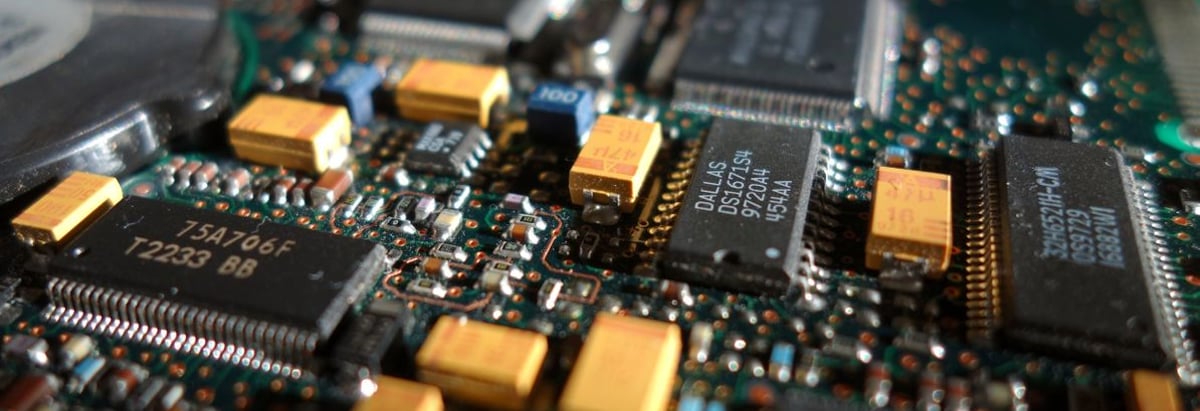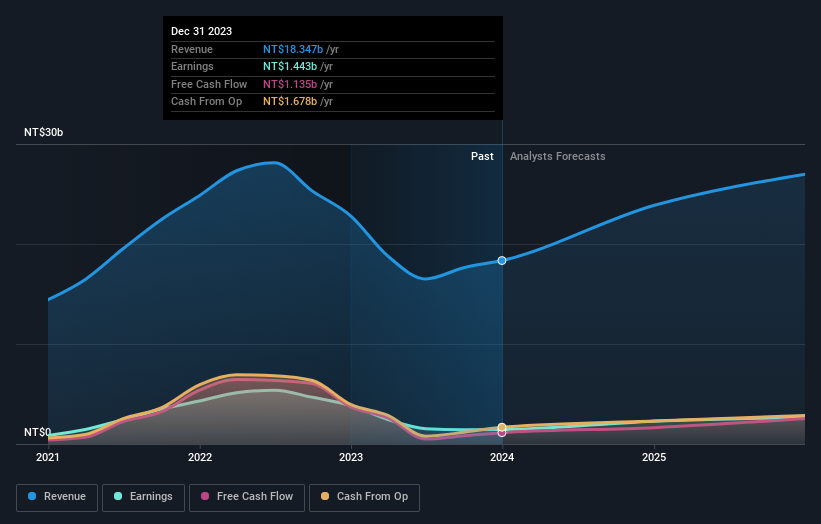- Taiwan
- /
- Semiconductors
- /
- TWSE:3592
Institutions profited after Raydium Semiconductor Corporation's (TWSE:3592) market cap rose NT$1.7b last week but individual investors profited the most

Key Insights
- The considerable ownership by individual investors in Raydium Semiconductor indicates that they collectively have a greater say in management and business strategy
- 48% of the business is held by the top 25 shareholders
- Institutional ownership in Raydium Semiconductor is 30%
Every investor in Raydium Semiconductor Corporation (TWSE:3592) should be aware of the most powerful shareholder groups. The group holding the most number of shares in the company, around 52% to be precise, is individual investors. In other words, the group stands to gain the most (or lose the most) from their investment into the company.
Individual investors gained the most after market cap touched NT$36b last week, while institutions who own 30% also benefitted.
In the chart below, we zoom in on the different ownership groups of Raydium Semiconductor.
See our latest analysis for Raydium Semiconductor

What Does The Institutional Ownership Tell Us About Raydium Semiconductor?
Institutional investors commonly compare their own returns to the returns of a commonly followed index. So they generally do consider buying larger companies that are included in the relevant benchmark index.
As you can see, institutional investors have a fair amount of stake in Raydium Semiconductor. This can indicate that the company has a certain degree of credibility in the investment community. However, it is best to be wary of relying on the supposed validation that comes with institutional investors. They too, get it wrong sometimes. If multiple institutions change their view on a stock at the same time, you could see the share price drop fast. It's therefore worth looking at Raydium Semiconductor's earnings history below. Of course, the future is what really matters.

We note that hedge funds don't have a meaningful investment in Raydium Semiconductor. Looking at our data, we can see that the largest shareholder is AUO Corporation with 15% of shares outstanding. With 9.4% and 5.2% of the shares outstanding respectively, Capital Investment Trust Corporation and Fubon Life Insurance Co., Ltd., Asset Management Arm are the second and third largest shareholders.
On studying our ownership data, we found that 25 of the top shareholders collectively own less than 50% of the share register, implying that no single individual has a majority interest.
While it makes sense to study institutional ownership data for a company, it also makes sense to study analyst sentiments to know which way the wind is blowing. There are plenty of analysts covering the stock, so it might be worth seeing what they are forecasting, too.
Insider Ownership Of Raydium Semiconductor
The definition of an insider can differ slightly between different countries, but members of the board of directors always count. Management ultimately answers to the board. However, it is not uncommon for managers to be executive board members, especially if they are a founder or the CEO.
I generally consider insider ownership to be a good thing. However, on some occasions it makes it more difficult for other shareholders to hold the board accountable for decisions.
We can see that insiders own shares in Raydium Semiconductor Corporation. It is a pretty big company, so it is generally a positive to see some potentially meaningful alignment. In this case, they own around NT$636m worth of shares (at current prices). It is good to see this level of investment by insiders. You can check here to see if those insiders have been buying recently.
General Public Ownership
The general public, mostly comprising of individual investors, collectively holds 52% of Raydium Semiconductor shares. This size of ownership gives investors from the general public some collective power. They can and probably do influence decisions on executive compensation, dividend policies and proposed business acquisitions.
Public Company Ownership
We can see that public companies hold 16% of the Raydium Semiconductor shares on issue. We can't be certain but it is quite possible this is a strategic stake. The businesses may be similar, or work together.
Next Steps:
I find it very interesting to look at who exactly owns a company. But to truly gain insight, we need to consider other information, too. For instance, we've identified 2 warning signs for Raydium Semiconductor that you should be aware of.
Ultimately the future is most important. You can access this free report on analyst forecasts for the company.
NB: Figures in this article are calculated using data from the last twelve months, which refer to the 12-month period ending on the last date of the month the financial statement is dated. This may not be consistent with full year annual report figures.
New: AI Stock Screener & Alerts
Our new AI Stock Screener scans the market every day to uncover opportunities.
• Dividend Powerhouses (3%+ Yield)
• Undervalued Small Caps with Insider Buying
• High growth Tech and AI Companies
Or build your own from over 50 metrics.
Have feedback on this article? Concerned about the content? Get in touch with us directly. Alternatively, email editorial-team (at) simplywallst.com.
This article by Simply Wall St is general in nature. We provide commentary based on historical data and analyst forecasts only using an unbiased methodology and our articles are not intended to be financial advice. It does not constitute a recommendation to buy or sell any stock, and does not take account of your objectives, or your financial situation. We aim to bring you long-term focused analysis driven by fundamental data. Note that our analysis may not factor in the latest price-sensitive company announcements or qualitative material. Simply Wall St has no position in any stocks mentioned.
About TWSE:3592
Raydium Semiconductor
Designs, develops, and sells of integrate circuits (IC) in Taiwan, China, Hong Kong, and internationally.
Flawless balance sheet, undervalued and pays a dividend.
Similar Companies
Market Insights
Community Narratives




